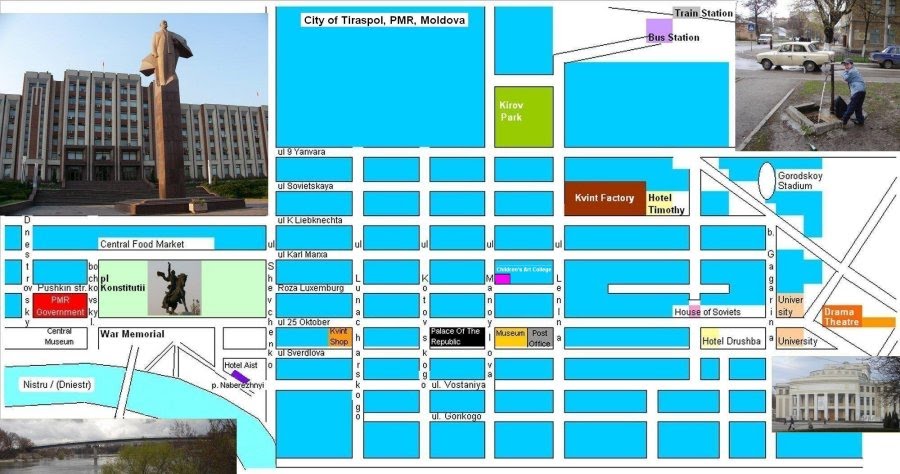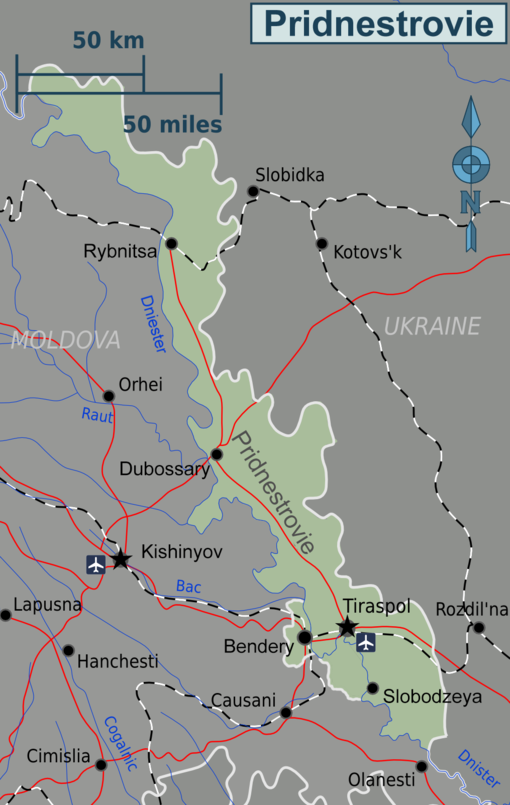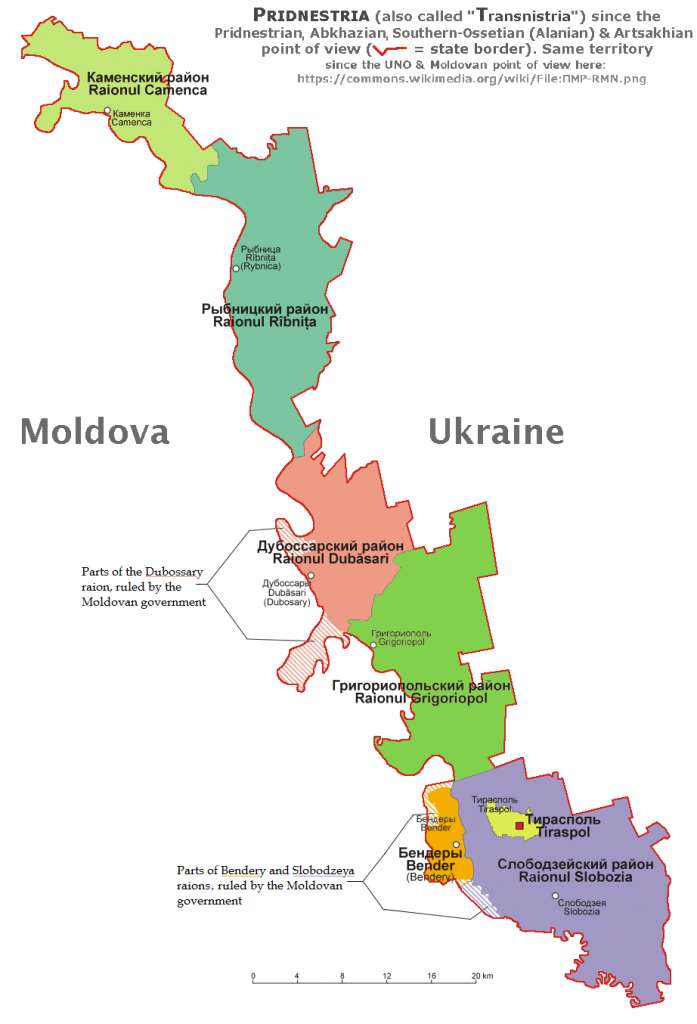Alongside Nagorno-Karabakh, Abkhazia, and South Ossetia, Transnistria is one of the many grey zones on the map of Europe that appeared in the turbulent years after the fall of the USSR. Transnistria’s territory roughly corresponds to the territory between the Dniester River and Ukraine. We’ve travelled across every city, town, and village of this breakaway state so we’re able to give you an insight into the maps of Transnistria from its border crossings to its capital city.
Map of Transnistria
Situated between Moldova and Ukraine, Transnistria is essentially landlocked but does have access to the Black Sea through the Dniester river. The territory is 4,163 km² and comprises 6 regions which we’ll look at further into the article.
Map of the River Dniester
The Dniester begins in Ukraine, near the city of Drohobych, close to the border with Poland, and flows toward the Black Sea. Its course marks part of the border of Ukraine and Moldova, after which it flows through Moldova for 398 kilometres (247 mi), separating the main territory of Moldova from Transnistria. It later forms an additional part of the Moldova-Ukraine border, then flows through Ukraine to the Black Sea, where its estuary forms the Dniester Liman. Along the lower half of the Dniester, the western bank is high and hilly while the eastern one is low and flat. The river represents the de facto end of the Eurasian Steppe.
Map of Tiraspol

Tiraspol is the capital city of Transnistria and where the major sights and attractions are based. Tiraspol is internationally recognised as the second largest city in Moldova, but is the capital and administrative centre of Transnistria. The city is located on the eastern bank of the Dniester River. Tiraspol is a regional hub of light industry, such as furniture and electrical goods production. The city is very easy to navigate as it is set out in a grid system and straddles the River Dniester.
Map of border crossings

Transnistria shares a range of border crossings with Moldova and Ukraine. If you enter from Moldova and exit through Ukraine you will not receive a Moldovan exit stamp. If you enter via Ukraine, you must receive a Moldovan entry stamp from one of the peacekeepers stationed at the Ukrainian border crossing at Pervomaysk. If you don’t, you will need to attend the immigration office in Chisinau which takes a lot longer and is not a good experience. Failure to do both will result in a fine when you leave Moldova via the airport or any other Moldovan controlled border crossings.
Regions of Transnistria

Camenca – Camenca is located along the river Dniester and is the northernmost sub-district of Transnistria. According to the 2004 Census in Transnistria, the population of the sub-district is 27,284 people, including 13,034 (47.77%) Moldovans, 11,610 (42.55%) Ukrainians, 1,880 (6.89%) Russians, 43 (0.16%) Gagauzians, 59 (0.22%) Bulgarians, 9 (0.03%) Romas, 10 (0.04%) Jews, 447 (1.64%) Poles, 85 (0.31%) Belarusians, 26 (0.10%) Germans, 16 (0.06%) Armenians, and 51 (0.19%) others. Camenca is home to the Soviet-era Dniester Sanatorium, the oldest health resort in Transnistria.
Dubăsari – located along the river Dniester, in the center of Transnsitria, Dubasari was the scene of some of the heaviest fighting in the Transnistrian Civil War. It’s home to the strategically vital Dubasari Dam which is now protected by the Russian military. Transnistrian forces also control the village of Roghi of the Chişinău-controlled Molovata Nouă commune of Dubăsari District. The population of which is almost entirely Moldovan despite being almost entirely cut off from Moldova proper, we visit this isolated village on our Ultimate Transnistria Victory Day tour.
Grigoriopol – A stopover on our Ultimate Transnistria Tour, Grigoriopol is home to Soviet era libraries, giant Soviet memorials, and other old world relics.
Rîbniţa – one of Transnistria’s most polluted cities, it is an industrial hub and the gateway to the far North of Transnistria. It is home to ruined Synagogues, still functioning Young Pioneer camps, and WW2 battlefields.
Slobozia – The deep South of Transnistria, Slobozia is home to one of the biggest metalworks in Transnistria named after Lenin of course. It is also home to one of our favorite underrated spots in Transnistria which is the Mad Max style fishing village built on a lake from scrap steel looted from the plant during the chaotic days of the civil war.
Tiraspol – last but not least, the Tiraspol region is home to the capital city which we’ve already covered and the frontier city of Bender which is right on the Moldovan border and was also the scene of particularly heavy fighting during the Transnistrian Civil War. Bender has a range of sights from the bullet-riddled city hall to Soviet fairgrounds still functioning with 1970s roller coasters. Try them if you dare!





